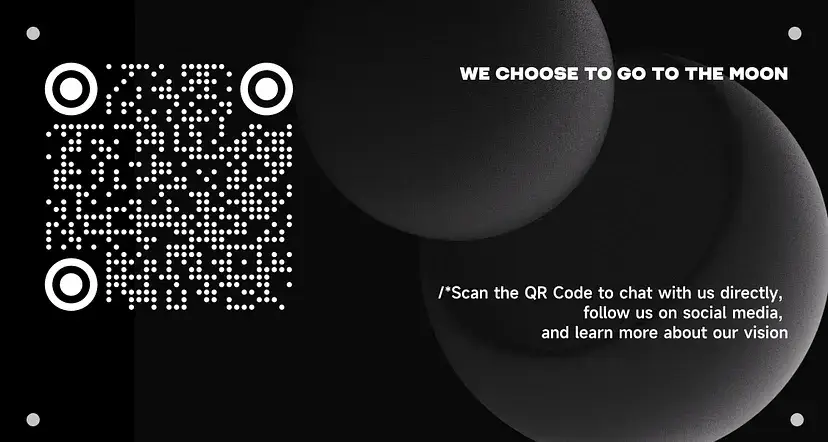Moonshot Mafia #01 | Product Philosophy behind STEPN
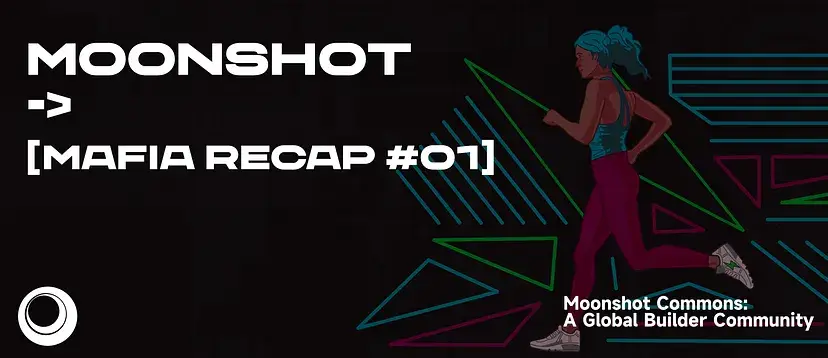
“STEPN is a Web3 lifestyle app with fun social elements and gamification design. Users equipped with NFT Sneakers — walk, jog or run outdoors to earn GST, which can be used to level up and mint new Sneakers. Player can choose to lease or sell their NFT Sneakers on the in-app Marketplace; users’ GST earnings are stored in the in-app Wallet, which has a built-in Swap function.” (Visit GameFi for more information)
At Moonshot Commons’ Web3 Fireside Chat #1, we were delighted to welcome Jerry Huang, founder of STEPN, to discuss his product philosophy that drives the innovation of STEPN.


How did you begin working on the STEPN project?
At the time, the success of Axie Infinity inspired me significantly. I had never thought to combine gaming with blockchain, and neither have I thought of how this combination could impact the economy and everyday lives. Nowadays, many families in the Philippines can make a living just by playing games.
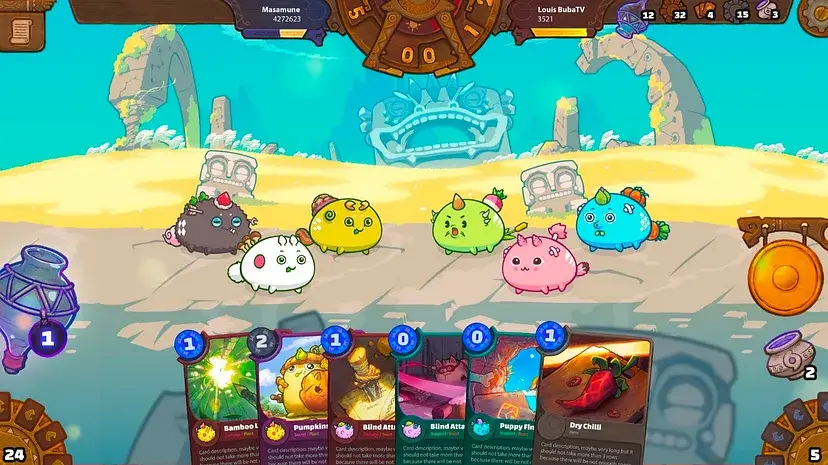
Later one day, while walking around my neighborhood, I noticed a license plate that read “CRYPTO”. I was intrigued that there was someone in the area also interested in blockchain technology. The next day, I brought a bottle of red wine and knocked on the neighbor’s door — Yawn, who now is the co-founder of STEPN.

Jerry Huang and Yawn Rong, Source: Fortune
Yawn started investing in blockchain in 2017 and has looked into various blockchain projects. We often chatted and discussed the development of the blockchain industry, which led to our discussion about Axie Infinity. I told him:
“I have many years of game development experience and have been keeping up with trends in blockchain technology. And you have invested in so many blockchain projects and have a better understanding of the market. Why don’t we do something together!’
And there comes the product STEPN.
We had a clear goal in mind for our product. We believe that while Axie Infinity unprecedentedly revolutionized many people’s lives, it left many problems unsolved. With my ten years of experience in game development, I believed that there are significant opportunities for improvement:
1) Token consumption is too limited. Most mechanisms focus on resource output, rather than resource consumption. SLP (the token of Axie Infinity) will soon inflate, impacting the entire system. In game development, designing a game model and economic system is always a big and complex task.
2) Its game mode is entirely a strategy-based card game. This is a relatively small game category, leading to a market of just 2 to 3 million of the 20 million people in the crypto space. Of course, there are also a few people outside of the circle; they don’t understand Crypto and only play the game to make money.
Our products are positioned differently than that of Axie Infinity. We didn’t want to serve only the 2 million people out of 20 million people in the crypto space; instead, we wanted to reach the 200 million people outside the crypto space. Therefore firstly, our product has to be easily comprehensible and easily usable.
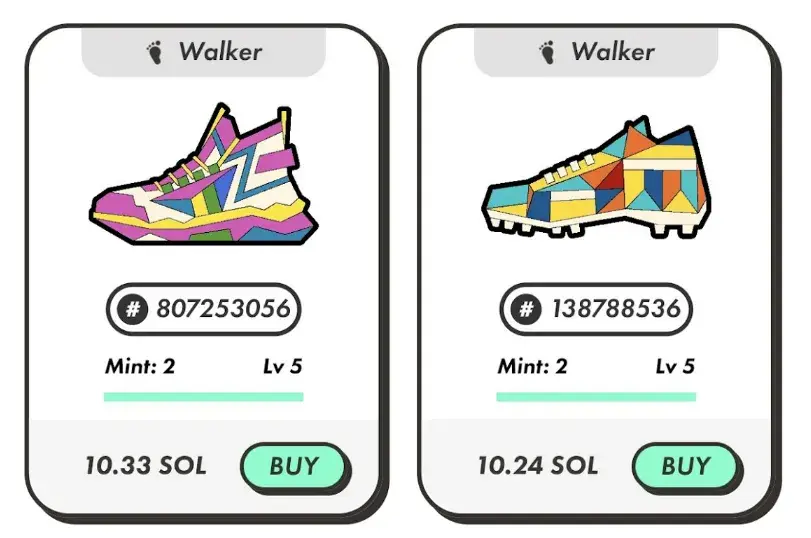
Despite the vastness of the gaming industry, the number of people who are actively involved in the gaming community is minuscule when compared to the overall population in society. However, sport is a topic that almost everyone talks about and can relate to. Therefore, we kept the most essential part of the economic system in Axie Infinity and tailored it to the sports scene.
When users use this App for the first time, we don’t tell them that it is a blockchain game. Many users do not have a concept for a “blockchain game” and are not sure what they can play, how to participate, and which skills they need. But if I simply told the users that it was a running app, 99% of the users immediately know how to use the App. We minimized the crypto element of the App so that users wouldn’t need to understand much about Crypto to get started with our product.
And you can’t ask users to download MetaMask first, then go to OpenSea to buy an NFT to use our product. Anyone who has worked with internet products knows that with every increased level of usage difficulty, the cost of education will increase by a lot, negatively affecting usage adoption and user growth in later stages.
After we came up with this idea, we chatted almost overnight, settled on a lot of details, and spent another night designing product sketches. I recently dug out that sketch and compared it to today’s STEPN, they have an 80% similarity.
That is the emergence of STEPN.

STEPN expands the gaming concept into the broader context of sports, Source: BeinCrypto

How do you design the economic model of your product? Do you think there are any general principles when designing economic models?
Whether it is a blockchain game or a traditional game, there is a universal principle: the circulation of the entire value system must be strong. You can neither deflate nor inflate the entire economic system, just like the economic system in the real world.
This is easier to achieve in traditional games. When you top up the USD, it will be converted into game currency. This is a one-way process. So, when inflation occurs, you only need to add a few new scenarios for consumption to solve the problem. In the crypto world, however, the flow of money is in both directions. You can’t prevent users from withdrawing their assets, thus the system must be handled with great care from the early stage.
This is also why I think many blockchain games are not made correctly. Many blockchain games are minting more than 5,000 NFTs as character assets at the start. Although this brings the first wave of attention, when more than 5,000 users enter the game as the game launches, the system will crash very quickly if not set up properly.
To avoid that, we didn’t focus on expanding our user base at an early stage. When the product was available, only a few hundred users joined. Then we gradually increase the amount and speed of our NFT airdrops based on user behavior of the few hundred and their impacts on the economic system.
In blockchain games, the core of its economic system is to control the production and consumption of tokens, which is the so-called inflation and deflation. It is very difficult to achieve deflation because everyone is here to make money. If they end up having to spend money and not make any, the users definitely cannot accept it.
But now we have in fact achieved a deflationary state. We can roughly see the data of the user’s general economic behavior. In the early days, there were very few people who came to mine coins; more people came to actually play. At that time, the consumption was about twice the output. For example, although I mined two tokens today, the average spending was four tokens. After that, we carried out macro-control through activities such as double rewards to maintain sustainable tokenomics.
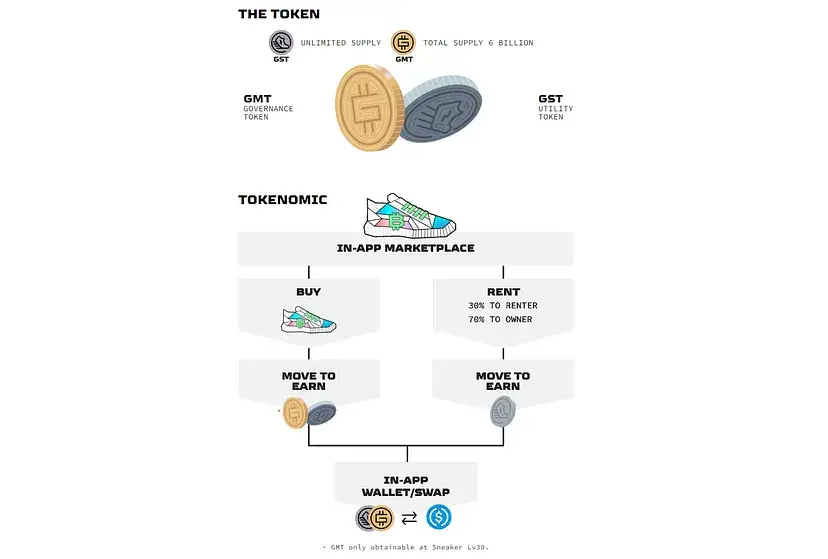
STEPN Tokenomics , Source: InsideBitcoins
How does STEPN regulate the price and return cycle of various shoes? How to generate new needs for old players continuously?
First, the price is determined by the market, not by us.
Secondly, we have many consumption mechanisms to meet different kinds of user needs.
Based on my previous gaming experience, around 3% of players are willing to spend money without expecting returns. Many users load 10 to 100 thousand dollars as soon as they create an account. After playing for a few days, when they realize that it isn’t as fun as they expected, they just leave the money there.
To reduce the stress and pressure on the game’s economic system, we have designed various ways for these players to spend their money. Our gem system, for example, is not necessarily designed to offer an economic return; in fact, the higher your level is, the less cost-effective it is. Yet, players still synthesize and burn gems on a daily basis.
There are many different user needs, and spending money rationally for returns is only one of them. People may spend money for various reasons, such as to demonstrate their wealth, compete with others, and so forth.
Axie doesn’t offer these types of opportunities, so the wealthy cannot satisfy their consumption desires. However, STEPN offers a variety of pursuits: users can buy shoes, synthesize gems, and so on. There are many opportunities for user consumption.

STEPN’s sneaker purchasing page from a user’s perspective, Source: CPA.RIP

I think the core of the metaverse is not the immersive experience, but the construction of an identity system and economic system. STEPN’s economic system has done a good job but still lacks an identity system. Is STEPN planning to have something like this in the future?
There will definitely be one. But we won’t add a lot of features for the sake of gameplay as that would make the product overloaded.
Identity has another important application: social networking. In the future, we will expand in the social direction and make a web3 social platform. This will become a very important part of our user growth.
Identity also has great potential for social networking. We are looking to expand the social perspective in the future by creating a web3 social platform. This will be an important feature in expanding our user base. Relevant functions can be launched in about half a year.
We are still using the concept of “move to earn” to attract users. When the number of users increases once or twice in size and user activity reaches a certain level, we will launch social modules to enhance users’ recognition of the product identity.
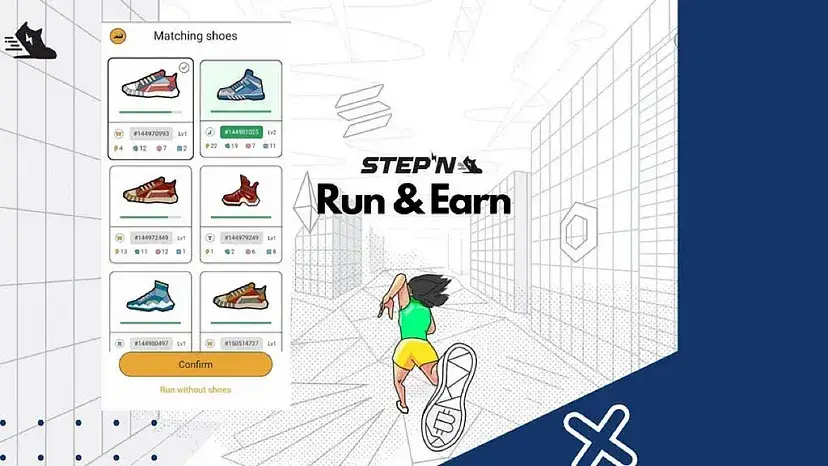
Do you have any experience or advice to share regarding user growth?
Here are some essential points for user growth in a gaming product:
Using STEPN is a profit-generating sharing process without users losing their dignity. Users are essentially sharing their running activity, rather than the amount of money they make. This is a far more positive approach than the ‘show-off’ approach displayed by many other products. In fact, users are generally against such showing-off behaviors.
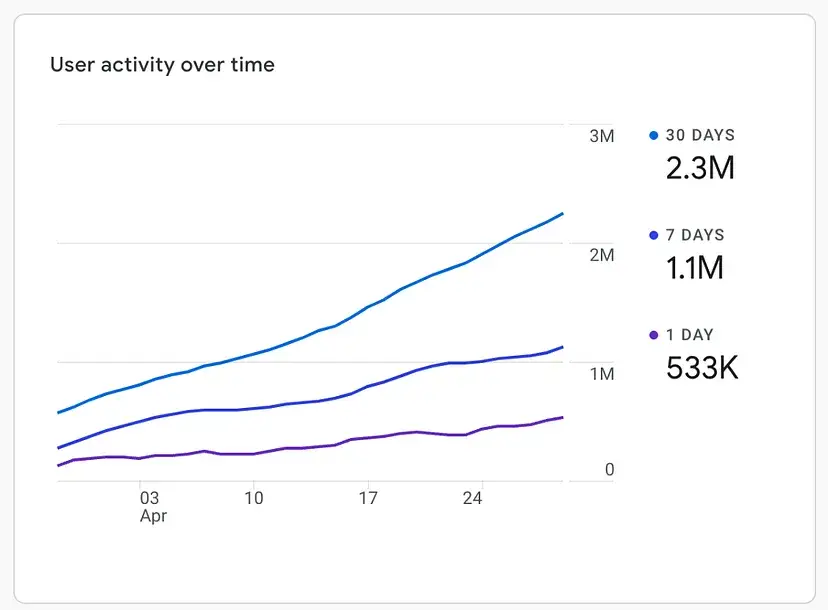
STEPN’s user growth after launching the public beta, Source: STEPN Official
How did you do a cold start during the early stage of your business?
The Cold Start Problem refers to the difficulty of making accurate predictions about a new user or item due to the lack of available historical data.
The core of a cold start is to leverage preexisting resources. Because in the beginning, you have neither the resources nor the authority.
We took part in a hackathon and won fourth place in the gaming category; this increased our visibility and attracted the first batch of users to our Discord.
Later, we gave away NFTs to attract another batch of users to our community. We invited all users to be part of our closed beta, letting them deeply participate in our product iteration, and gifting them NFTs as rewards. Because of this, the entire user community has a sense of growing and building something together, creating a strong cohesion among users.
Our community was also incredibly inclusive and forgiving, even when we made mistakes. We did a batch of NFT airdrops and we found that more than 90% of users chose to hold their tokens — a truly remarkable result.

STEPN Winter 2021 Shoebox Airdrop Event, Source: STEPN Official
How did you manage financing and public relations?
When we spoke to investors about our products and business models during the seed round, many did not understand and did not believe our products would have great market acceptance. We could only pitch door-to-door. We talked to over 100 VCs and ended up selecting only a few to partner with.
Our financing was actually completed before we had the MVP and performance data, but we didn’t rush the announcement of our financing information. We knew clearly that it would bring a lot of attention to the startup, and many people in the circle will check out our official website and Twitter. However, this early traffic would hardly convert into users. The blockchain world is constantly evolving with new content every day. People quickly forget about you after reading about your financing.
That’s why we waited until the public beta was complete before announcing it so that people could actually download our product. This traffic had a high conversion rate, which allowed us to gain many users.
All in all, entrepreneurs should adequately plan ahead in order to not waste many good opportunities.
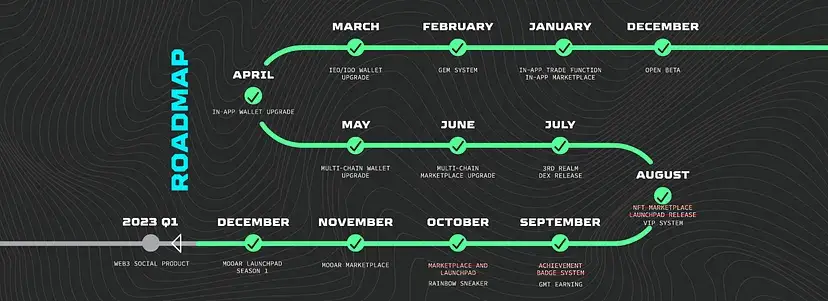
STEPN Roadmap, Source: STEPN Official

Do you have any advice on team building?
Our team is small but mighty! With dozens of members in our R&D team and about 50 people total, we are spread out across the world in places like London, Hong Kong, the Philippines, Singapore, the United States, and Australia.
Rather than expanding the team, I think it’s more important to find talented people. The pandemic has brought us a lot of trouble but has made remote work a popular option, making it easier for us to find the best talent regardless of geographical boundaries. The lack of physical coordination that comes with remote work can be a challenge, but with the right people on board, it can be a great advantage.
Talented people need less management and can often surprise us with their innovative solutions. This means that we don’t have to rely on a traditional company structure with complex hierarchies.
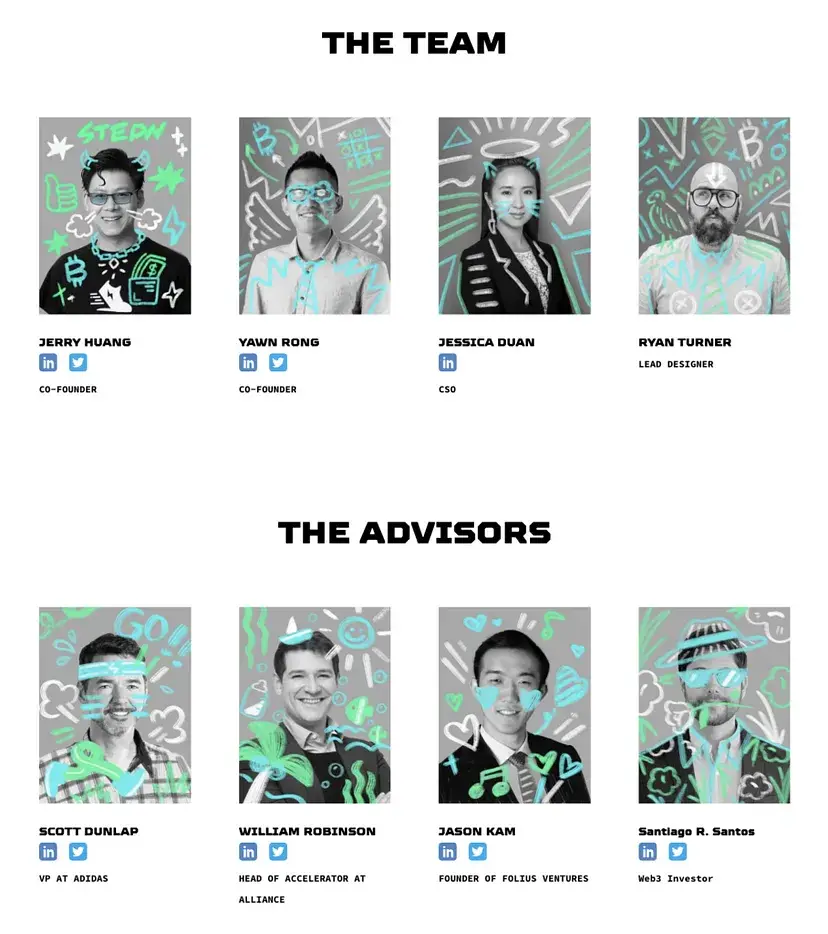
STEPN’s Core Team Overview, Source: STEPN Official
We are a team of college students who want to start a business in the gaming industry. But we found that gaming is a relatively tough industry, which may be too challenging for students. What do you think about this?
Successful video games come in two varieties: the high-budget 3A masterpieces, which may not be suitable for college students, and another type of game that relies on a strong core gameplay system to succeed.
Many successful cases, such as Plants vs. Zombies and Wink Murder in the early years, belong in the second category and demonstrate that games that innovate the core gameplay system have the potential to set the trend for the upcoming wave of games.
When many such games are successful, they do not have to have a refined product interface. Take Wink murder as an example, the essence of this game lies in the competition among players, not in how visually appealing the interface is. Such game companies may have a small developing team of no more than ten people, yet they have the potential to create products that can resonate around the world.
If you have truly innovative ideas for a gaming system, I would recommend pursuing them; however, if you’re merely considering gaming as a potential business venture, you may face a number of obstacles.

GenZ founders should run with their truly innovative idea, Source: STEPN Official
